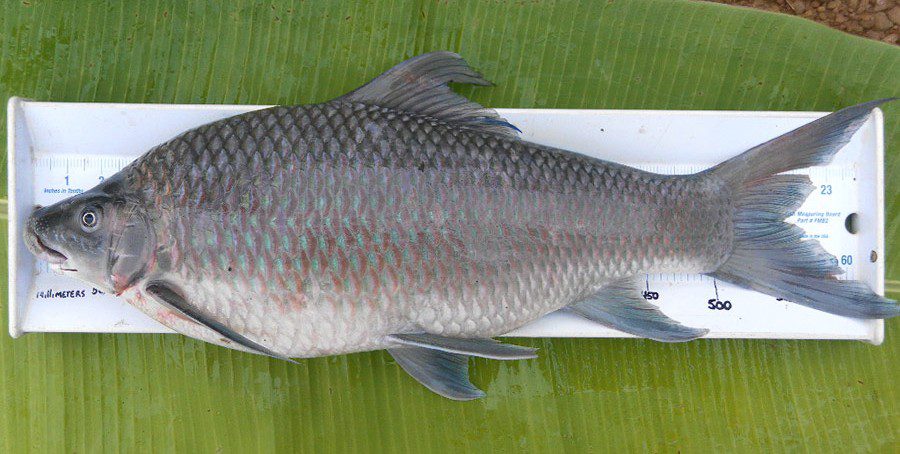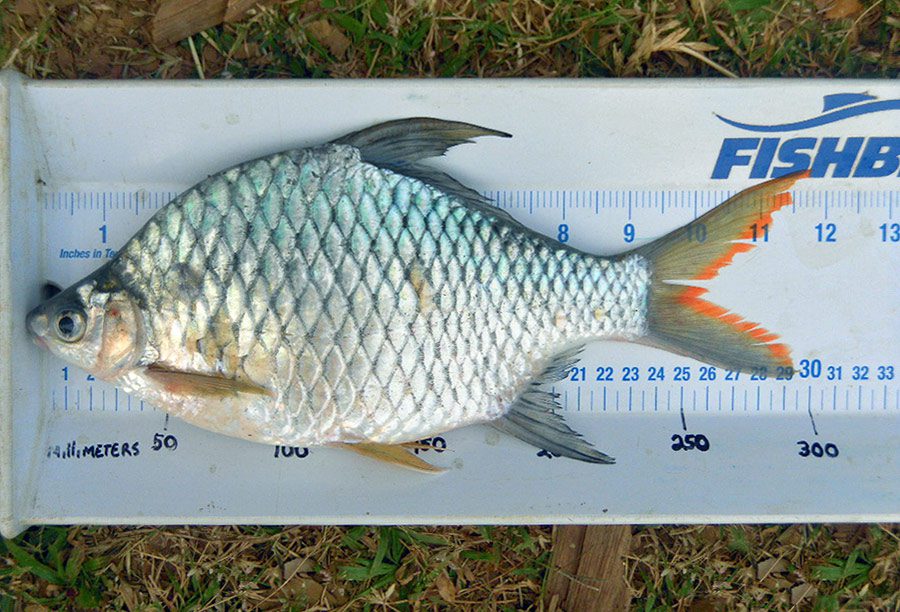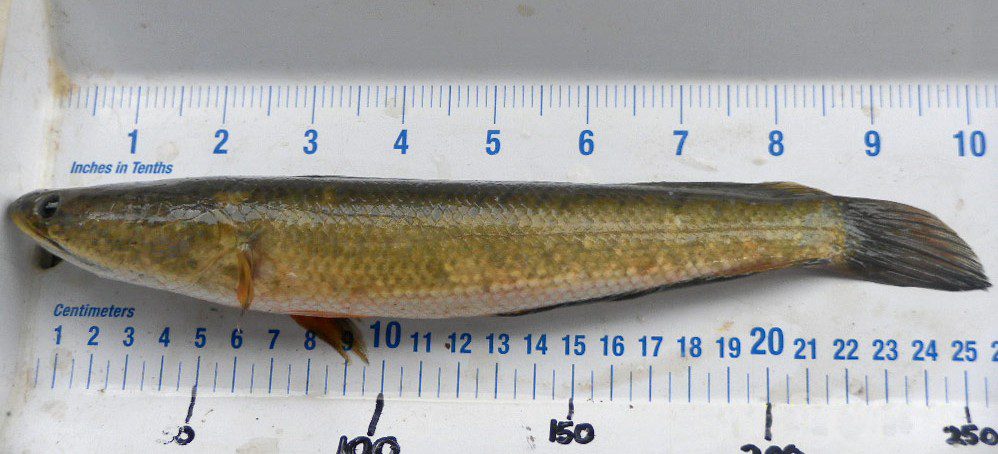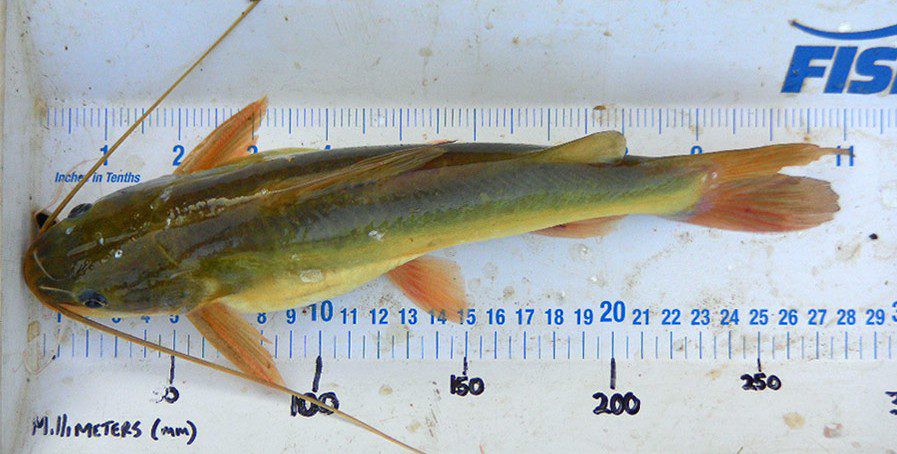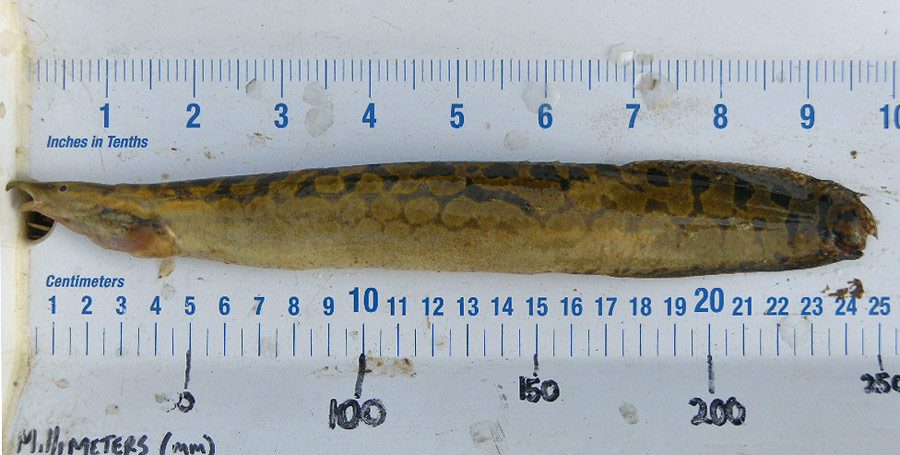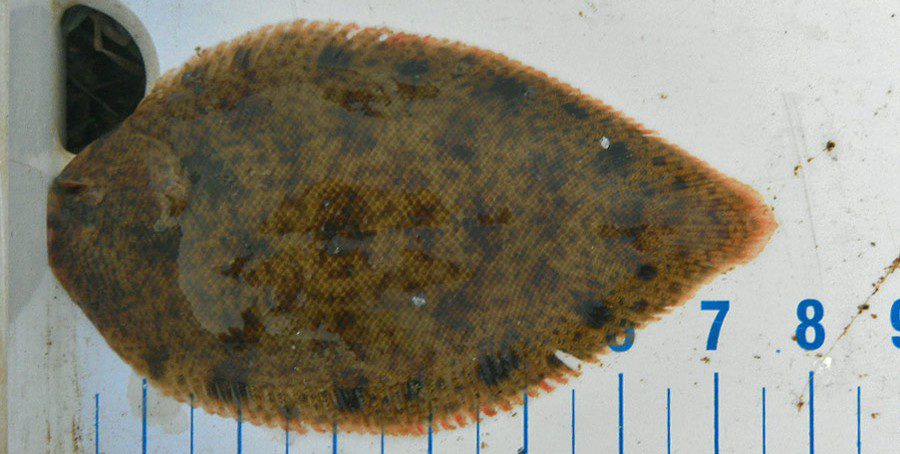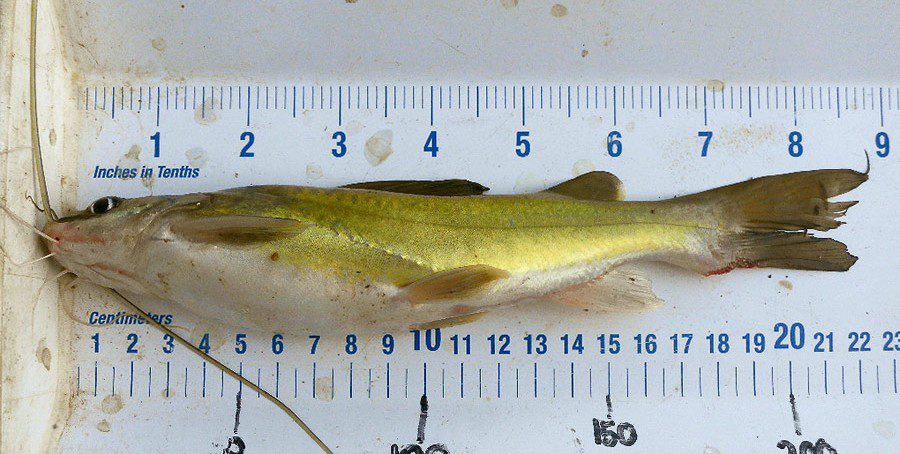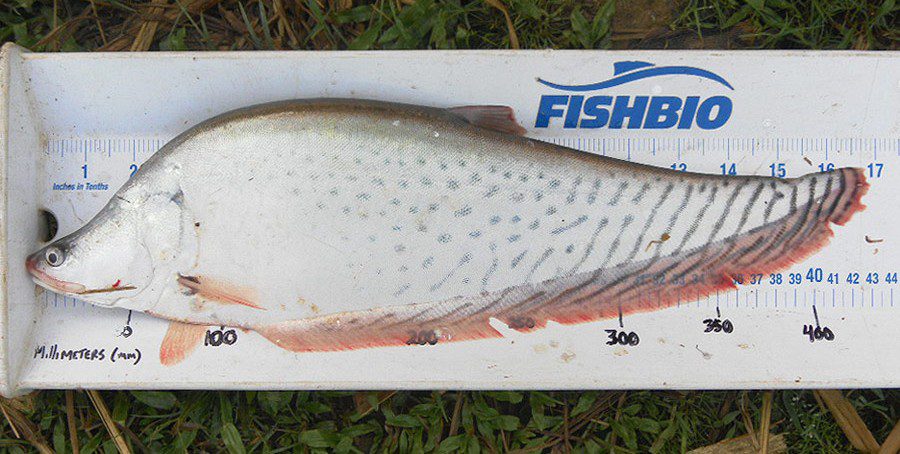Tuesday March 15, 2011
This is just a small sampling of the immense diversity that the Mekong River Basin supports. These very different species were all found living in a relatively small 30 km stretch of river. Some of these fish belong to the family Cyprinidae, which includes carps, minnows, and barbs. These fish have tooth-like structures on specialized gill rakers instead of in their jaws, which they use to “chew” food. Mekongina erythrospila is known to migrate in schools of several hundred, moving together with other cyprinids and loaches. This would be a highly diverse migrant group, composed of species with very different body size and morphology. M. erythrospila can get up to 450 mm (17.7 in), while the loach Botia modesta maxes out at about 250 mm (9.8 in). We have also seen the species Chitala blanci in our sampling, from the family Notopteridae, commonly known as “featherbacks”. This family is quite unique, as the male is the one who builds a nest and protects the eggs. The diversity keeps getting wilder. We have also seen species of Soleidae (soles) and Mastacembelidae (spiny eels). While you may have eaten sole for dinner before, did you ever consider eating a spiny eel? The people of the Mekong do. Our field crew collected all of these specimens from fishers bringing their catch to the kitchen or the village fish market.
See our post The Measure of a Fish to learn more about our Mekong research. Click on the thumbnails above to see larger images.
Photo source: FISHBIO

